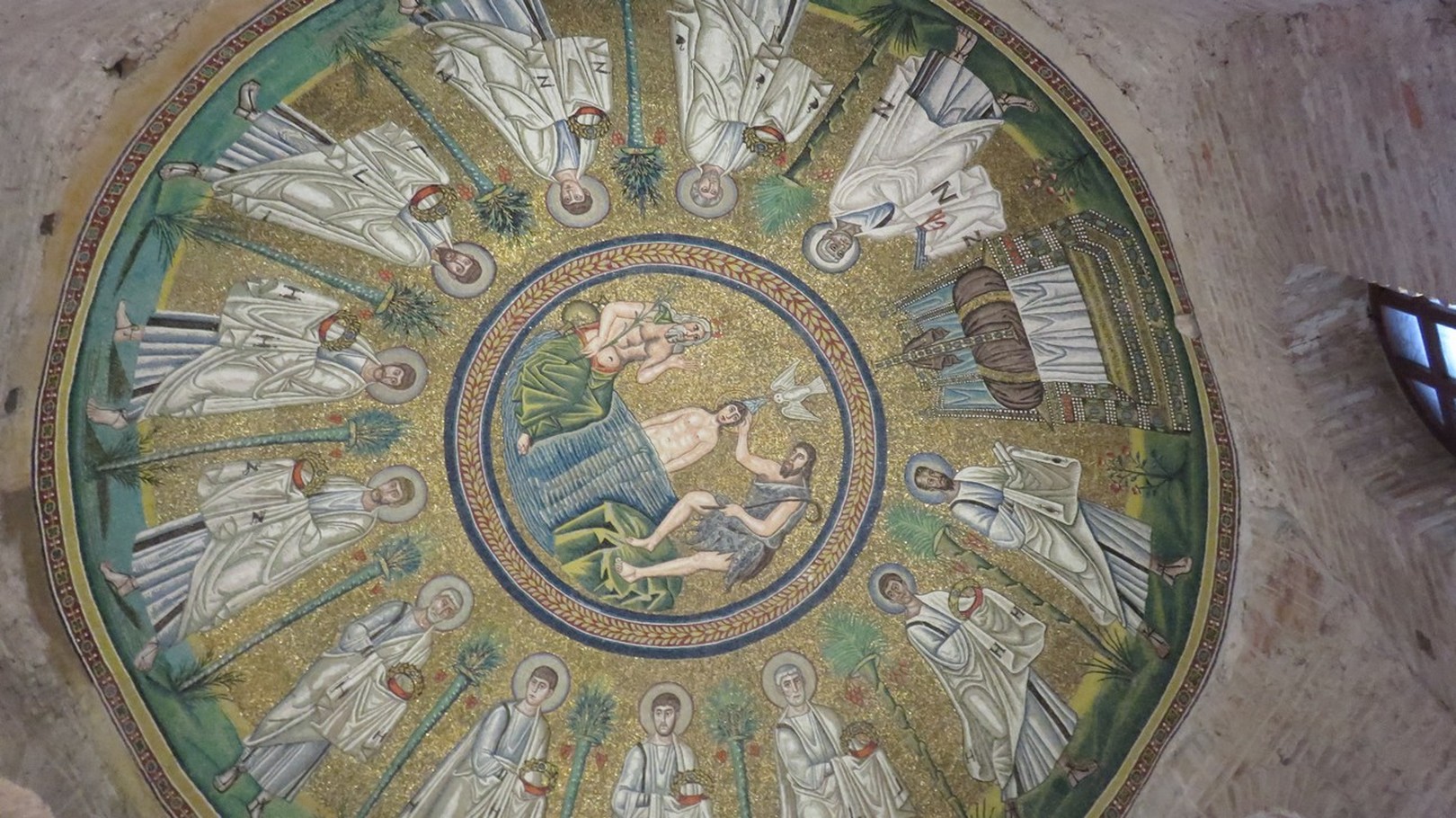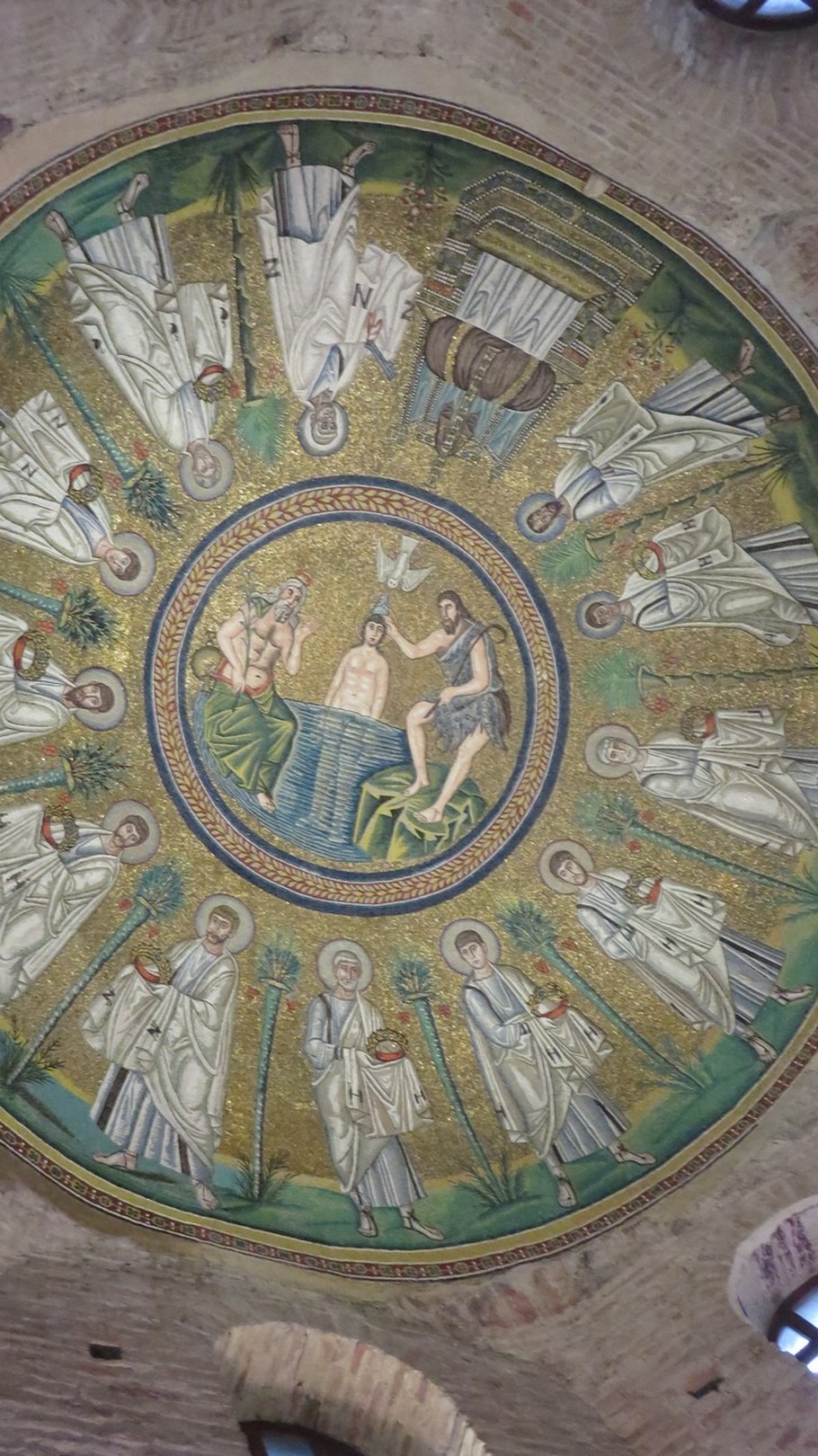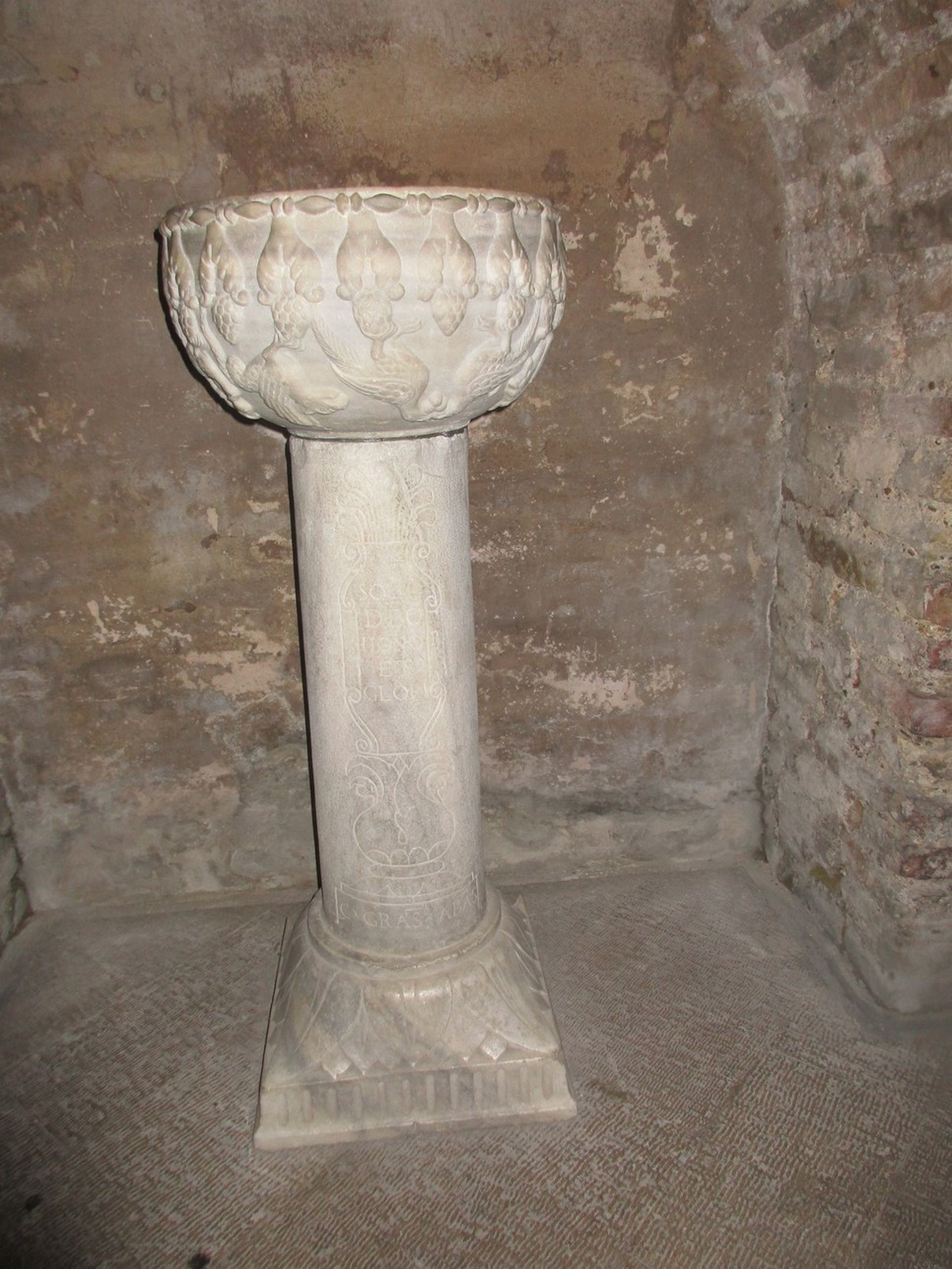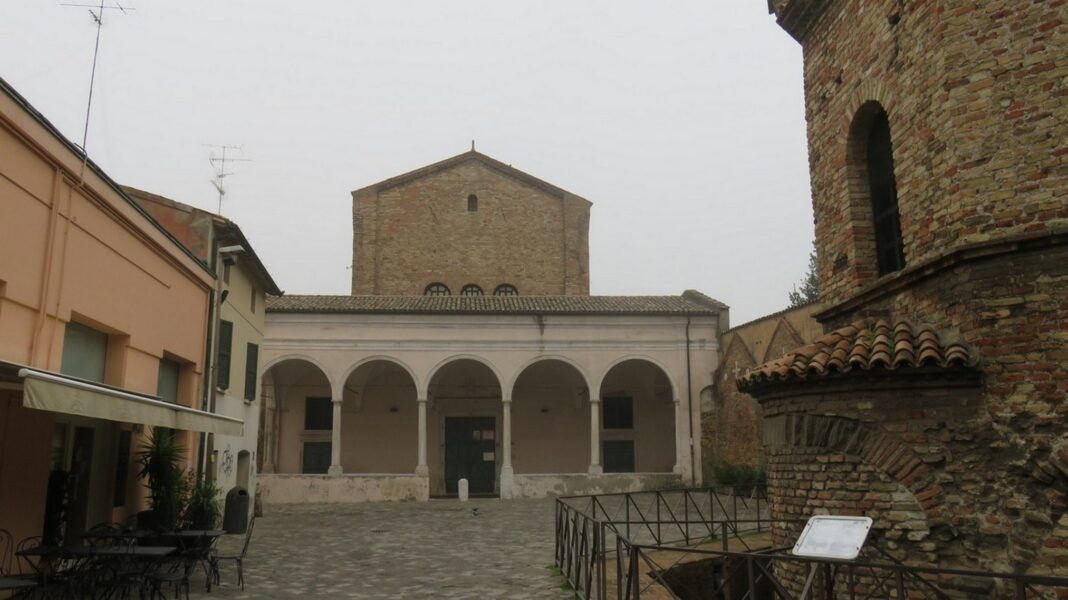By Catherine Tsounis
Greek culture is in Ravenna and the tourist is not aware, as it lingers in the shadows. Our destination was the Arian Baptistery. The ancient cathedral of the Arian cult, built at the beginning of the sixth century, is right next to it. Built by Theoderic, the Cathedral was dedicated to the Hagia Anastasis, the Greek word for the Resurrection of God. Gianfranco Bustacchini points out in his masterpiece Ravenna “this dedication must not amaze us, because it is to be stressed that the links between Greece and Ravenna were very strong for centuries.”1

It was later consecrated after Theoderic’s death in 526 A.D. to the Catholic religion dedicated to St. Teodoro, soldier and martyr of Amasea in the Hellenistic, Greek region of the Black Sea Pontus. Since the 15th century, the final name of the church was Spirito Santo associated with a legend. “Severely damaged during World War II, the church was renovated many times during the 20th century. Today, it is entrusted to a community of Orthodox monks.”2
Next to the Church of Spirito Santo is the Arian Baptistry, built by Theoderic. It is modeled after the Orthodox Neonian Baptistery. The difference is in the alien artwork that reflects their religious beliefs. It is incredibly beautiful and is a masterpiece of Arian Christian art. the baptism of Christ surrounded by the apostles and an enthroned cross is in the dome. To the left of Jesus sits a bearded figure with a crab on his head, a pagan influenced representation of the river Jordan. I am not a theologian and appreciate the beauty if the art.

For all who want to study the differences in theology, visit my links. The Byzantines took Ravenna in 540, bringing Arian and barbarian rule in Italy to an end. About 10 years later, Emperor Justinian gave the Arian Baptistery to the orthodox (Catholic) community of the city, who turned it into a church called Santa Maria in Cosmedin.3 Seeing Late Roman/early Byzantine art in Ravenna is a memory to treasure.

References:
1.Bustacchini, Gianfranco. RAVENNA: Mosaics, Monuments and Environment,
Ravenna. Salbaroli Publishers, 2012, p. 100.
2.https://www.turismo.ra.it/en/culture-and-history/religious-buildings/basilica-spirito-santo/
3. https://www.thebyzantinelegacy.com/arian-baptistery
Photos:
Photo1 – Church of Spirito Santo. All photos by Despina Siolas, MD/Ph.D.
Photo 2- Arian Baptistry
Photo 3 – Mosaic of Baptism of Christ.
Photo 4- Mosaic of Baptism of Christ.
Photo 5- Interior of Arian Baptistry.








